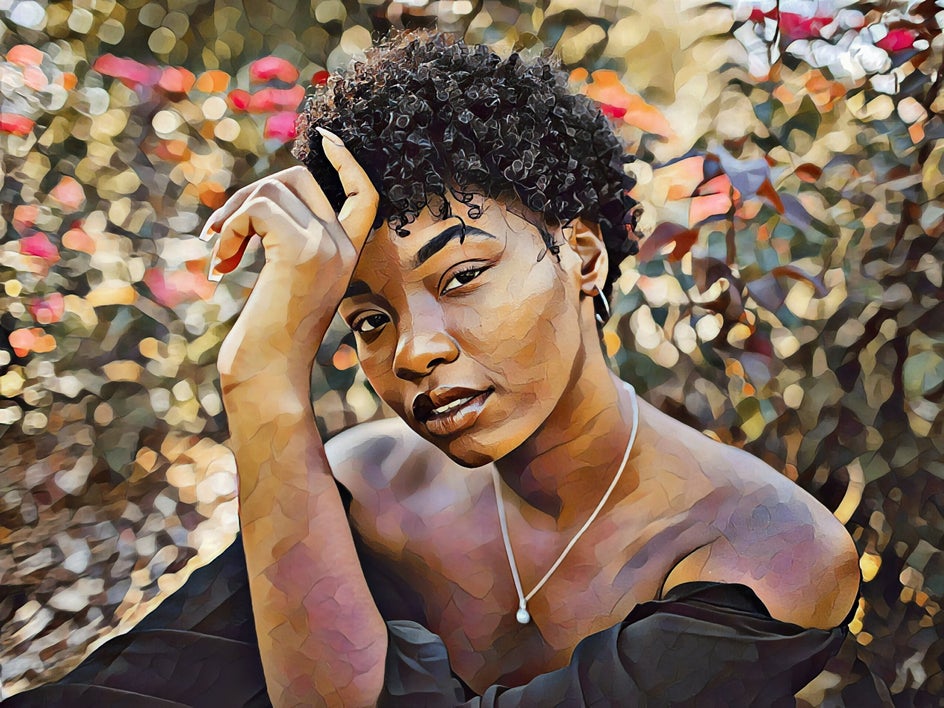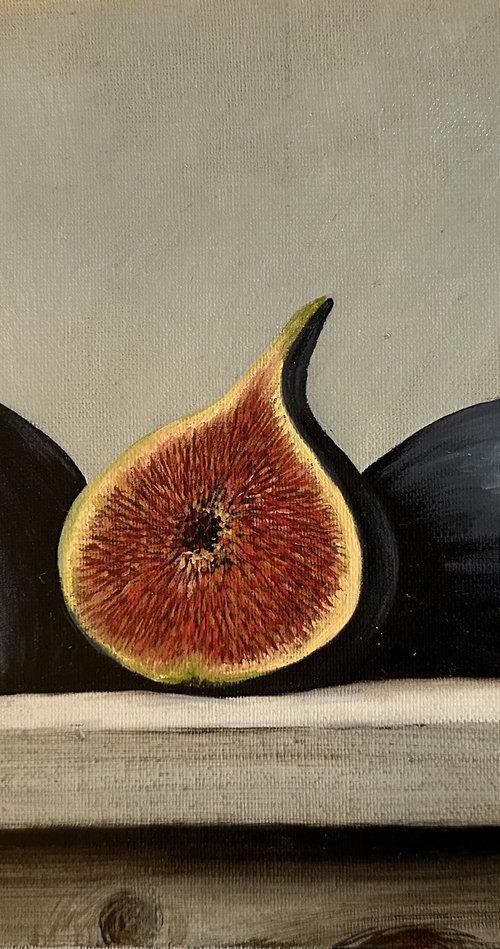Browse Classic Art Pieces Oil Paintings for Sale Today
Wiki Article
Discovering All Regarding Oil Paints: A Guide to Recognizing Their Charm and Worth
Oil paintings have actually mesmerized audiences for centuries, using a look right into the creative mastery of various eras. Their abundant history is intertwined with innovative strategies and extensive psychological expression. Recognizing the materials and approaches behind these artworks can boost gratitude. In addition, the marketplace for oil paints offers chances for investors and collection agencies alike. As one discovers this interesting globe, the question develops: what makes an oil paint truly beneficial?The Background of Oil Painting: A Journey Through Time
Oil painting has roots that date back to ancient times, it genuinely prospered during the Renaissance, when musicians uncovered its flexibility and abundant shade capacity. Early instances can be traced to the 7th century, with techniques advancing significantly across cultures. The tool ended up being prominent in Northern Europe in the 15th century, specifically via the works of artists like Jan van Eyck, who spearheaded its use for thorough realistic look and vivid colors. This period marked a departure from tempera paints, allowing for better deepness and appearance. As oil paint spread, it influenced countless artists, causing work of arts by prominent figures such as Leonardo da Vinci and Rembrandt. The tool's tradition continues, forming the art world well into modern-day times.Comprehending Oil Repaints: Products and Techniques
As artists check out the globe of oil paints, they come across a diverse range of products and methods that define this medium. The primary components of oil paint consist of pigments, which offer color, and drying out oils, such as linseed, that bind the pigments and help with application. Various ingredients can customize the paint's texture and drying time, improving adaptability. Methods like glazing, where transparent layers are developed up, and impasto, which includes using thick paint, permit various aesthetic results. In addition, using brushes, scheme blades, and even fingers can develop unique textures and coatings. Recognizing these techniques and materials enables musicians to completely reveal their imagination and attain the wanted impact in their art work.The Function of Color in Oil Paintings
Color plays a pivotal role in oil paintings, affecting both visual allure and emotional resonance. Understanding shade concept basics, including the relationships in between colors, can enhance an artist's ability to convey mood and environment. Additionally, understanding shade mixing methods enables higher depth and richness in a painting's palette.

Color Theory Essential
Comprehending color theory is necessary for musicians collaborating with oil paints, as it develops the structure for creating visually engaging and harmonious make-ups. Shade theory incorporates the study of exactly how colors engage, the color wheel, and the connections between main, additional, and tertiary colors. Musicians use complementary colors to boost contrasts and create focal points, while similar shades advertise unity and cohesiveness within an item. Furthermore, the concepts of warm and awesome colors influence the understanding of deepness and area in a paint. Realizing these principles permits artists to adjust color efficiently, guiding the customer's eye and communicating their intended message. Mastery of color concept ultimately enriches a musician's capability to convey emotions and concepts with their work.
Psychological Impact of Color
The emotional influence of shade in oil paints plays an essential role in exactly how viewers link and view with art work. Shades evoke particular sensations and state of minds, influencing the visitor's emotional state. For circumstances, warm colors like oranges and reds can develop a sense of warmth and power, while amazing tones such as blues and greens commonly evoke calmness or self-questioning. Artists purposefully select color schemes to improve narrative components, guiding the audience's emotional journey. The saturation and comparison of shades better enhance these effects, drawing attention and creating emphasis. Inevitably, the interaction of shades in oil paintings not just enhances their aesthetic appeal but likewise works as an effective tool for emotional expression, enriching the visitor's experience and interpretation.Color Combining Techniques
While lots of elements of oil painting add to the total structure, mastering shade mixing strategies is crucial for attaining wanted results and deepness. Color blending can be approached with numerous approaches, including the additive and subtractive procedures. Additive mixing entails integrating colors of light, while subtractive mixing relies upon pigments, where colors blend to create new tones. Musicians usually use a restricted scheme to produce harmonious works, comprehending the relationships between key, secondary, and tertiary shades. Strategies such as glazing and scumbling additionally boost depth and luminance. By masterfully blending colors, a musician can stimulate feelings, develop prime focus, and attain a sense of realistic look, eventually elevating the painting's visual and emotional impact.Famous Oil Painters and Their Iconic Works

Famous for their mastery of color and method, oil painters have produced some of the most renowned artworks in background. Popular artists like Vincent van Gogh astounded target markets with his emotive brushwork in "Starry Night," while Claude Monet's "Impression, Sunup" laid the groundwork for Impressionism. Leonardo da Vinci's "Mona Lisa" continues to be an enduring sign of artistic genius, showcasing his skill in catching human expression. Rembrandt's "The Evening Watch" illustrates his cutting-edge usage of light and shadow. Other noteworthy figures consist of Pablo Picasso, that reinvented contemporary art with his strong testing in jobs like "Les Demoiselles d'Avignon," and Georgia O'Keeffe, whose vibrant depictions of landscapes and blossoms helped define American innovation. Each artist's unique style contributed considerably to the oil paint landscape.
Exactly how to Assess the Top Quality of an Oil Paint
Evaluating the top quality of an oil paint includes here a cautious analysis of craftsmanship methods, in addition to an analysis of color and composition. Observing brushwork, layering, and the application of paint can reveal the artist's skill level. Additionally, the interaction of colors and the overall setup of elements contribute considerably to the paint's aesthetic value.Evaluating Craftsmanship Techniques
A thorough analysis of craftsmanship techniques is necessary for figuring out the quality of an oil painting. Critics must initially take a look at the application of paint; thick, distinctive brushstrokes may suggest a competent hand, while excessively uniform applications can show a lack of deepness. oil paintings for sale. The layering technique is also crucial; the existence of lusters and varied density can enhance luminosity and intricacy. Furthermore, the top quality of the products used, such as the canvas and pigments, plays a significant function in longevity and general visual. Attention to information in aspects like sides and changes in between colors shows the musician's dedication to their craft. Inevitably, these strategies add to the paint's emotional influence and market price, functioning as indications of the artist's ability and intentAssessing Color and Composition
While examining the high quality of an oil painting, one must concentrate on the interplay of color and structure, as these elements are essential to the art work's total influence. Color options can evoke feelings and establish state of mind; therefore, the artist's combination should be examined for harmony and comparison. A healthy structure guides the audience's eye and produces a feeling of unity. Artists usually use strategies like the rule of thirds or leading lines to enhance visual interest. In addition, using light and darkness can add deepness, improving the three-dimensionality of the painting. Eventually, an effective oil paint marries shade and composition, involving the audience and welcoming a much deeper appreciation of the artist's vision and technique.Caring for and Preserving Oil Paintings
Appropriate care and preservation of oil paintings is important for keeping their stability and longevity. To shield these art work, it is crucial to display them away from direct sunlight, which can trigger fading and discoloration. Keeping a steady environment with controlled temperature level and moisture additional help in protecting against damages. Cleaning up should be done carefully making use of a soft, dry cloth, avoiding any type of extreme chemicals that could harm the paint or varnish. Normal evaluations for indicators of wear and tear, such as breaking or flaking, are suggested. When saving or delivering oil paintings, proper padding and framing are essential to stay clear of physical harm. Inevitably, persistent care adds to the aesthetic allure and worth of oil paints with time.The Marketplace for Oil Paints: Spending and collecting
Recognizing the marketplace characteristics for oil paintings is important for collection agencies and capitalists alike. The worth of these artworks is affected by numerous elements, consisting of the musician's reputation, historic significance, and current trends. Collection agencies commonly look for items that reverberate personally while thinking about possible recognition in value. Auctions and galleries work as main places for trading, with rates rising and fall based on demand and rarity. Purchasing oil paints calls for research right into the marketplace, along with an understanding of credibility and provenance. Furthermore, arising musicians may provide opportunities for considerable returns, while developed names can regulate high costs. Overall, a strategic strategy to gathering can generate both aesthetic enjoyment and economic rewards.
Frequently Asked Concerns
What Are the Environmental Influences of Oil Paint Materials?
The environmental influences of oil paint products consist of the release of volatile natural compounds (VOCs), damaging waste generation, and source removal for pigments. These elements add to pollution and environmental destruction, raising concerns among environmentally mindful musicians and consumers.Just How Do Various Canvases Affect Oil Paint Results?
Different canvases influence oil painting results considerably. Appearance, surface area, and absorbency top quality can change paint application, drying times, and shade vibrancy. Artists usually choose specific canvases to attain wanted effects and enhance their artistic expression.Can Oil Paintings Be Recovered if Damaged?
If damaged, Oil paintings can indeed be brought back. Specialist conservators use numerous methods to fix tears, tidy surface areas, and address discoloration, ensuring that the art work keeps its original charm and value for future generations.What Are the Indications of an Initial Oil Paint?
The indicators of an original oil painting consist of noticeable brush strokes, appearance variations, and an uneven canvas weave (oil paintings for sale). Furthermore, credibility might be verified with provenance, trademarks, and the presence of a varnish layer one-of-a-kind to oil toolsExactly How Has Innovation Influenced Modern Oil Painting Techniques?
Technology has actually greatly influenced modern-day oil paint techniques by introducing digital tools for planning, boosted products for appearance and long life, and online platforms for offering and sharing art, thereby increasing artists' imaginative possibilities and target market reach. Oil painting has origins that date back to ancient times, it really prospered during the Renaissance, when artists found its adaptability and rich color possibility. The psychological impact of shade in oil paints plays a vital role in just how visitors regard and connect with art work. While lots of facets of oil painting contribute to the total composition, understanding color mixing techniques is important for attaining wanted results and deepness. Assessing the quality of an oil paint involves a careful evaluation of craftsmanship methods, as well as an evaluation of shade and composition. While assessing the top quality of an oil paint, one must concentrate on the interplay of shade and structure, as these elements are essential to the art work's total impact.Report this wiki page